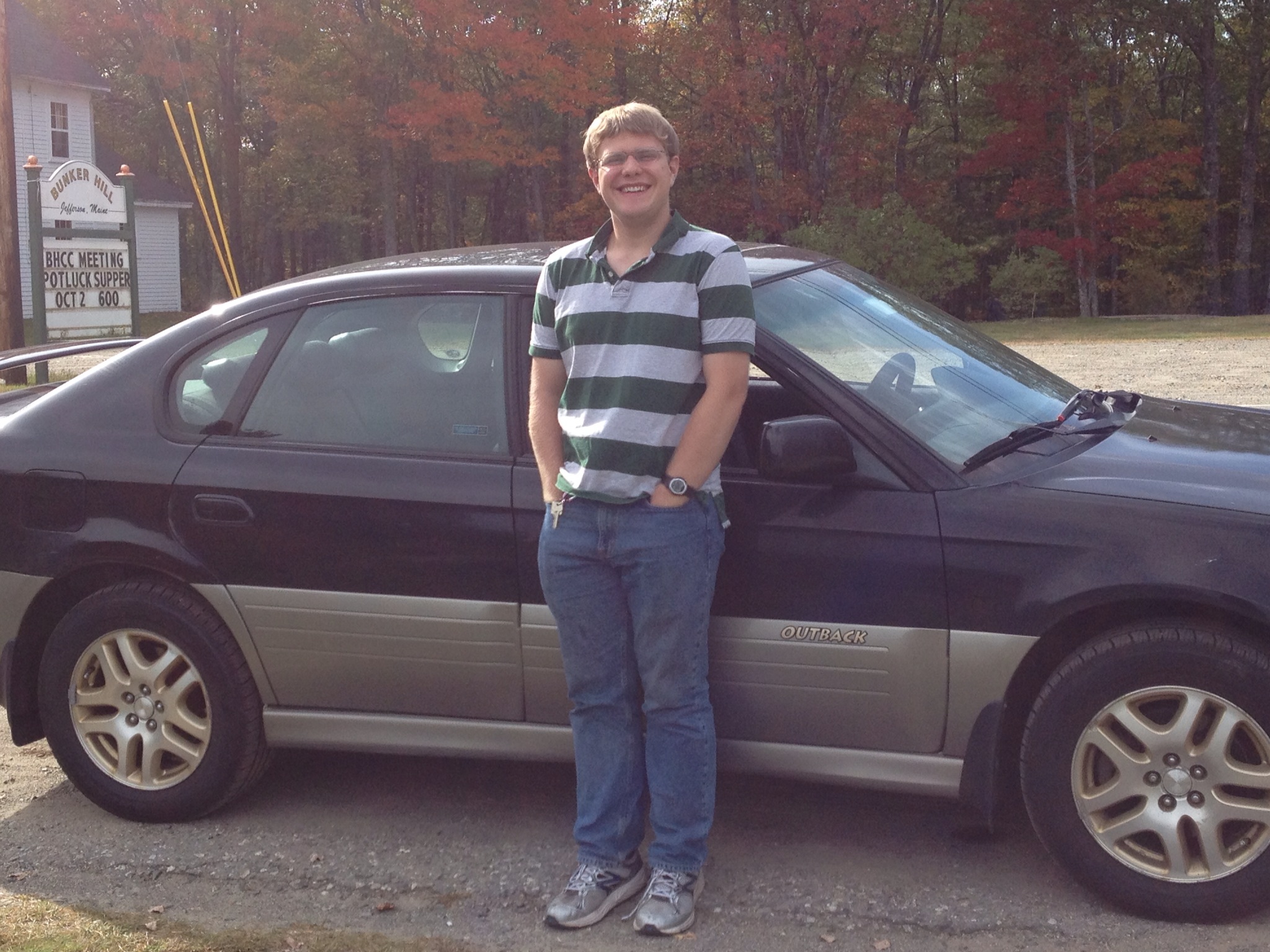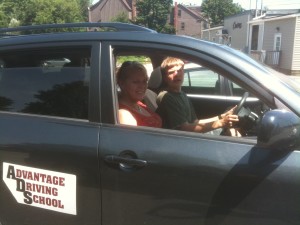There’s nothing like teaching your adolescent to drive to make you a better driver (a better driver at least according to the Department of Motor Vehicles’ standards.) It’s amazing what we, as “seasoned,” “experienced” drivers, forget or fail to do. For example, have you noticed
how far away the white Stop line and Stop sign are from a reasonable location to actually stop and evaluate vehicle and pedestrian traffic? My son Jason was taught to come to a full stop: “Stop, Bobble.” (According to instructor Miss Donna at Advantage Driving School, “Bobble” is the momentum still in force when the car stops but your body keeps moving, then bounces gently back.) “Then count, one, two. Then creep.”
Seasoned Drivers have learned it isn’t until “creep” that a driver can actually see what’s going on, and can then make informed safety judgments. Who stops way back at the Stop line? (Answer: people who don’t want to flunk the on-the-road test.)
Then there are the secondary road speed limits. If you respond promptly to secondary road speed limits in most cases, you are causing a major hazard. Who actually goes from 45 to 35 miles an hour, right where the signs are? Seasoned Drivers “go with the flow,” easing into speed limit compliance over a smooth and controlled brief period of time that all the drivers behind you also seem to intuitively know.
Most of us Seasoned Drivers can do several things at the same time. We can keep some car momentum up, while concurrently scanning over our shoulder, yielding (Yield: Let the other guy go first, if there is another guy) and then merging with the Privileged Drivers who don’t have to worry about yielding. (By the way, Yes! You can buy an extra break for the passenger side of the family car, just like the driving schools! It costs around $350 plus installation labor. This tends to take some of the stress off the “phantom” break we parents are constantly seeking on the floor at those OMG moments.)
In fact, we Seasoned Drivers can talk on the cell, adjust the radio, scan the Garmin and drink Five Hour Energy at the same time. Adolescent, Student Drivers, not so much.
–Especially an adolescent who has autism, or an autism spectrum disorder (ASD). Jason earned his Learner’s Permit in when he was 16, and, well, Life hasn’t been the same since. I don’t have typically developing kids, but I do recall learning to drive myself. My experience, while not effortless, was nothing like Jason’s. My friends and I joked “Red means stop, green means go, and yellow means floor it.”
Kids with autism can be very concrete thinkers. For example, when Jason came back from his interview at Bowdoin College for an internship as a prep chef, we had this exchange:
“Jay! How did it go?”
“Great!”
“What did they say?”
“Questions.”
Or, when I see Jason after school, I’ll ask “So, what did you do in Culinary today?”
He says, “A recipe.”
Very literal thinkers, ASD kids can be. So when the speed limit sign says 35 after a 45 mph section, Jason is quick to comply.
Another interesting thing I’ve learned with Jason is how much of driving depends on non-verbal communication and environmental subtlety. Think about it: there’s the head math we do at a four-way intersection about who got there first, second or third, and therefore in what order everyone is “entitled” to go. First In/First Out. If a driver violates that etiquette, the 7th grader still deep within us mutters “You cut.”
Sometimes it’s not clear who got there first or second. Then Seasoned Drivers rely upon eye contact, a smile, and a beneficent wave. “You go.” “No, you go.” “I insist.” “Ok, thank you. Hope you have a fabulous day!” (At least that’s how it’s done in Maine 😉 Jason has had to practice the fine motor skills associated with The Wave. I’m not kidding—it’s hard for him to both do it, and know when to do it.
The thing about teaching an adolescent with ASD to drive is, you need to teach nearly everything. We helped Jay get his Learner’s Permit as soon as he was eligible, because do a ton of driving with him to have that teaching time. (Another Fun Driving Fact: In Maine a Learner can remain on his permit for 18 months, and you can file for an extension. According to GEICO, our auto insurance won’t go up until Jason gets his full license or into an accident, whichever comes first.) Jason’s pretty good at staying between the lines (“No Honey, not the two yellow lines, the yellow line and the white line”), and rather artful at finding all the safe places in midcoast Maine to pull over and let everyone else by so he can follow each and every speed limit sign and stop just before all the stop lines without inciting too much Road Rage from the Seasoned Drivers. (Yes! You can order magnetic Student Driver signs like the ones the Driving Schools have!) I remember the first time a pick-up truck pulled out of the Dairy Queen to cross Jason’s path, which in itself was not unusual. What was unusual for Jay—his first time–is the pick-up had a trailer behind it. That required a whole other level of judgment, timing, and evasive action.
But there are some things Jason can do like no one I’ve ever seen. He can focus. He was in that car to learn to drive safely, and learn to drive (more) safely is what he still works on today. As near as I can tell, there wasn’t a lot of funny stuff going on in that head about all the “silly rules,” and what he’ll do with the car the first time he’s in it without his mother or father.
Jason’s also what we call a “mapper.” He’s always been one. Take Jason anywhere, and he will memorize the road signs and the streets, and be able to find his way from point A to point B without fail. He just has a “sense” about direction. We call him The Garmin. It’s like he has a photographic memory.
It is that near-photographic memory, combined with Jason’s kinesthetic learning style, that are our most powerful tools making sure Jason is a safe driver. Once he learns it, whatever “it” is, he owns it. He’s good at it. He doesn’t look back. You should try his Corn and Cashew Nut Curry.
When it’s your turn, give me a call. I’ll tell you where to buy all that stuff.

